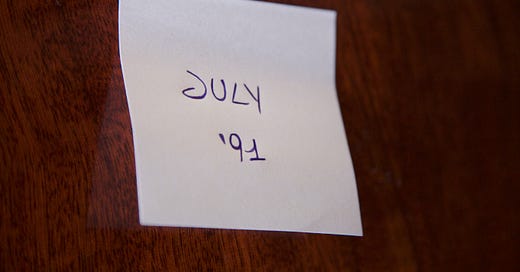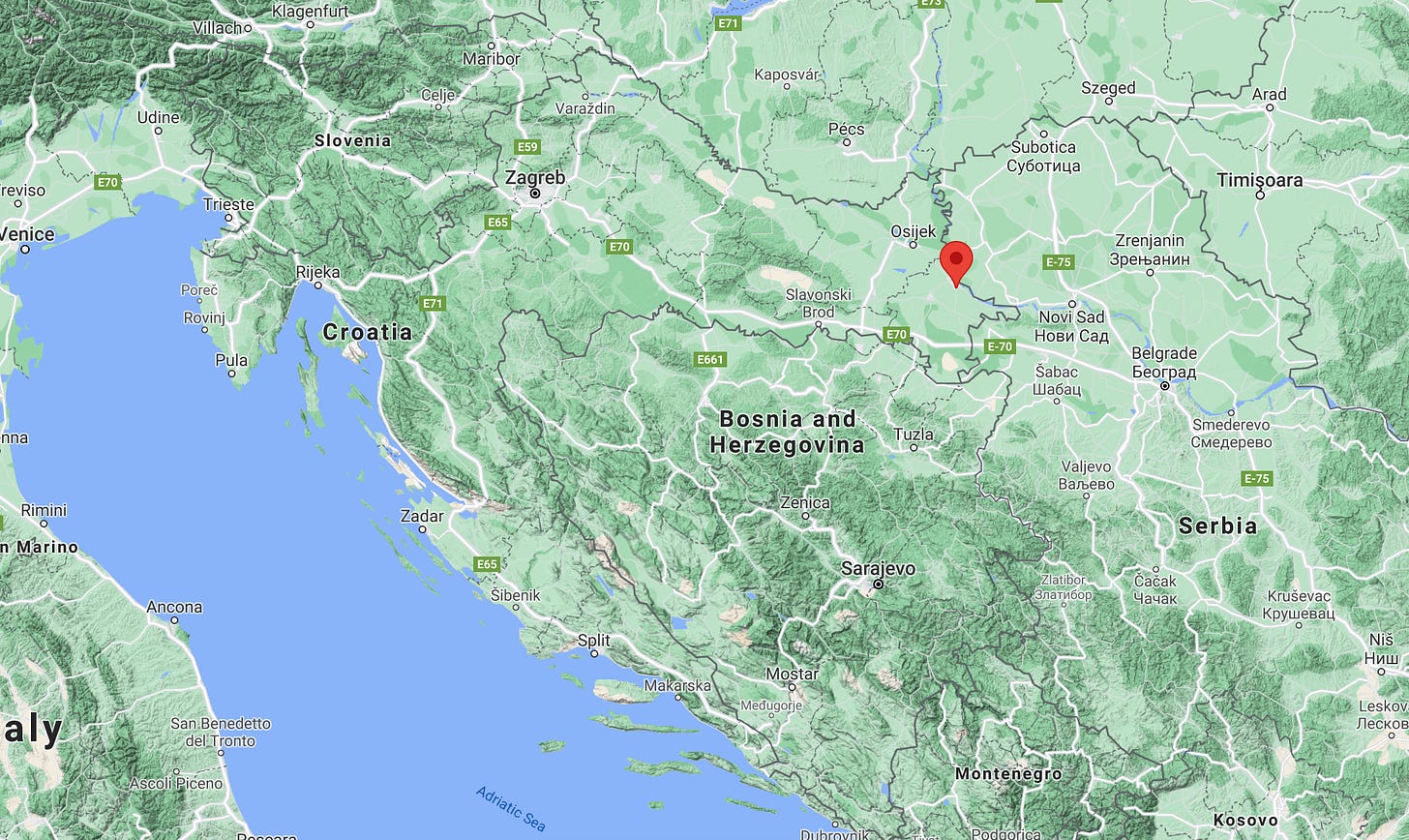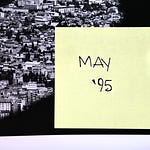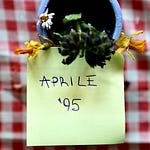It is July 1991.
Just one week ago, Slovenia declared independence (on June 26) and the Yugoslav People’s Army (JNA) launched the first attack [you can listen to the latest episode of BarBalkans - Podcast here].
The first four days of war ended with a ceasefire. But the situation seems more unstable than ever.
While Ljubljana is ready to end the war and its belonging to the Federal Socialist Republic of Yugoslavia, another actor is back on the scene.
Croatia has already experienced an escalation of tension in the previous months.
However, in July there is nothing that can stop the war.
This is how that the first real ethnic conflict breaks out in the Balkans.
Goodbye Ljubljana
The ceasefire on June 30 is the calm before the storm.
Two days later the Yugoslav People’s Army (JNA) breaks the truce. July 2 is the longest day of the Slovenian war.
The armored column stuck in the Krakovski gozd forest (on the southeastern border with Croatia) tries to force the block. The Slovenians fire back.
Here it comes the support of the federal aviation, which also hits Ljubljana castle’s cell towers. The tanks hit the road again towards the border crossings.
The JNA flexes its muscles during the toughest clashes since the beginning of the conflict.
The Slovenian presidency proposes a truce. But General Blagoje Adžić refuses: «The Slovenes are hypocritical and unscrupulous, they use the most vile tricks».
But Ljubljana receives the world solidarity. From Germany to the United Kingdom, from the United States to Italy, the Western countries look at Slovenia as David against a communist Goliath.
They multiply the appeals for the independence of the secessionist Socialist Republic and for the end of the JNA attacks. Whose generals remain silent.
It is July 6 when the Federal Secretary of People’s Defense of Yugoslavia, Veljko Kadijević, sweeps away any doubts.
The Army is ready to comply with the Slovenian presidency’s demands.
On July 7, the peace in Slovenia is ratified on Brijuni Islands, where there was once the residence of Marshal Tito.
Officially, the Brioni Agreement establishes a 3-month moratorium on the Slovenian independence. Actually, it recognizes that secession has taken place.
It is the beginning of the war in Croatia.
The generals of the federal army - who are unpresentable on the international scene by now - have joined President Slobodan Milošević’s pan-Serbian project.

The gates of hell
For months Croatia has been experiencing the ethnic tension, characterized by physical violence: ambushes, shootings, bloody clashes between the Croatian authorities and the Serbian minorities in Slavonia and Krajina.
From Pakrac to Titova Korenica and Borovo Selo.
When the Croatian Parliament proclaims independence on June 26 - as in Slovenia - the gates of hell are opened.
The hell of ethnic conflict between the Croatian National Guard and the Republic of Serbian Krajina’s rebels.
At the beginning of July the situation is irreversible.
Josip Reihl-Kir, the Chief of police in Osijek and the last Croatian who still believed in a compromise [May ‘91. Ambush the peace], is murdered with 28 bullets by Ante Gudelj. The killer is Croatian, too, but ultra-nationalist.
With the murder of Reihl-Kir, peace is buried in Croatia.
While the attention of international observers is focused on Slovenia, Mile Martić’s Chetnik militias attack the village of Glina.
The martičevci can count on federal mortars. Moreover, the JNA troops led by Colonel Slobodan Tarbuk create a protective buffer, before the Croats can shoot back.
This is the Ram Plan, aiming to create the framework of Greater Serbia [February ‘91. A beginningless war].
The guerrilla spreads like wildfire in 8 regions: Western and Eastern Slavonia, Banija, Kordun, Lika, northern Dalmatia, Dubrovnik and some islands.
These are very different regions from one another, even for ethnic composition. The Serbian takeover is faster where the Serbian population is more concentrated (Knin, Kordun, Lipa and Dalmatia).
On the other hand, where there is fierce Croatian resistance, such as in Slavonia, the federal Army intervenes with artillery attacks and aerial bombardments. In particular, against the cities of Vukovar, Dalj, Osijek and Erdut.
To “clean up” territories from the Croatian presence, Serbs resort to paramilitary groups and their macabre methods. Organized in units of 15/40 men, these groups are responsible of inhuman violence against non-Serbian civilians.
There are the martičevci - also called knjindje (the city of Knin hybridized with ninja) - the soldiers of the Territorial Defense, the Arkan’s Tigers, Vuk Drašković’s National Guard, the Avala Army Corps, the White Eagles and the Blue Eagles.
On the other hand, in addition to the National Guard, there are the ultra-nationalist units of the Croatian Democratic Union (HDZ). They are guilty of bloody actions against captured Serbo-Croatian rebels.
Meanwhile, the joint offensive of the Chetnik militias and the federal Army is launched in Banija region. Only Petrinja and Kostajnica resist.
The Croatian President, Franjo Tuđman, calls for the intervention of UN peacekeepers and international observers. But the Western diplomatic services do not respond to the call, as they did in spring.
Three war fronts are opening up:
In the North-East, in the Vukovar-Osijek-Vinkovci triangle
In the center, along the Sava River and the Zagreb-Belgrade highway
In the Adriatic area, between Zadar and Split
At the end of July, the momentum is all Serbs’, who also conquer Kostanjica.
Now the JNA attention is focused entirely on Slavonia.
The city of Vukovar is the big fish to catch.
If you liked this article, you can spread this parallel journey and the free weekly newsletter on social media:
You can also give a gift subscription to whoever you want. Don’t let this virtual trip to the Balkans get lost!
Here is the archive of BarBalkans - Podcast:

















Share this post